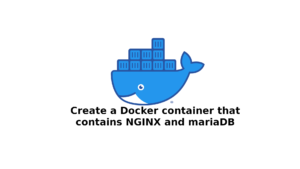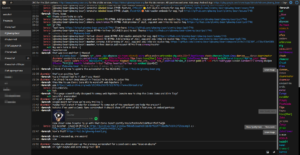Today I want to discuss some interesting stuff related to Raspberry Pi used in making servers and server nodes. This is a very interesting topic for me because ARM is getting a lot of attention lately. And it’s for a proper reason. ARM is power efficient, so for smaller workloads, it’s actually very power efficient. I will discuss why it matters later in this article.
Recently, a firm hosting Raspberry Pi servers has grown enough to get a proper data-center. Which proves the point that Raspberry Pi is getting popular as a solution for efficient hosting. David Tischler, the man behind the small firm that is proudly serving 40+ customers. He initially started in his home with some RPI clusters and Cisco routing, firewall and switching. He is now moving his service to a proper data-center.
There are other hosting providers too, who are currently and actively selling Raspberry Pi dedicated servers on the cheap. These servers usually cost around 5 – 20 bucks per month, depending on configuration or models. You can ask for extra storage and they mostly come with 8 – 32GB storage. Even if it’s not that powerful when it comes to processing power compared to Intel or other x86 alternatives, these little minions of servers can help you a lot with greater efficiency.
Raspberry Pi’s are little computers with lots of usage
For those who know little about Raspberry Pi, let me tell you some words in this section. Raspberry Pi is a single board computer, meaning it has all its necessary components built into the main board. Raspberry Pi has ARM processor, low power consuming RAM and eMMC storage with expandable storage support.
The latest model of Raspberry Pi Model B has:
- A Broadcom BCM2711, Quad core Cortex-A72 (ARM v8) 64-bit SoC @ 1.5GHz processor (most powerful processor yet for Raspberry Pi)
- 2GB, 4GB or 8GB LPDDR4-3200 SDRAM (depending on model)
- 2.4 GHz and 5.0 GHz IEEE 802.11ac wireless, Bluetooth 5.0, BLE
- Gigabit Ethernet
- 2 USB 3.0 ports; 2 USB 2.0 ports.
- Raspberry Pi standard 40 pin GPIO header (fully backwards compatible with previous boards)
- 2 × micro-HDMI ports (up to 4kp60 supported)
- 2-lane MIPI DSI display port
- 2-lane MIPI CSI camera port
- 4-pole stereo audio and composite video port
- H.265 (4kp60 decode), H264 (1080p60 decode, 1080p30 encode)
- OpenGL ES 3.0 graphics
- Micro-SD card slot for loading operating system and data storage
- 5V DC via USB-C connector (minimum 3A*)
- 5V DC via GPIO header (minimum 3A*)
- Power over Ethernet (PoE) enabled (requires separate PoE HAT)
- Operating temperature: 0–50 degrees C ambient
Raspberry Pi was initially marketed as a computer for kids and learners. Now it is one the most famous and widely used SBC or single board computers. Because Raspberry Pi is made specially for the tinkerers. It’s a portable, low power, efficient computer on a single board that doesn’t cost much. While Raspberry Pi 4 is the latest, other models of Raspberry Pi are still being sold and widely used. Raspberry Pi is used for tinkering, making and exploring without high expenses. You can use it for IoT, embedded systems, mini servers and even for AI research and testing. Although I’m more interested in the server part.
Raspberry for servers

My interest peaked after miniNode news and I thought it’s a cool idea to have dedicated servers on Raspberry Pi. Now, there are some challenges when it comes to hosting servers on RPI. First, there is no virtualization, so each SBC is a single server. Since the CPU isn’t that much more powerful compared to x86 server processors, you can’t run power hungry applications on RPI. After all, it’s just an ARM board, but this may change soon.
With all the latest inventions revolving around ARM, it’s getting more powerful and efficient each year. And with the trend of using ARM on desktop, the tech world is interested in making ARM more powerful and ready for big stuff. We can make ARM more powerful yet more efficient, and Apple already did it with M1 and A12Z. Apple is soon bringing a 32-core M1 chip and this will be bonkers.
So in near future, SBC’s can have more powerful ARM processors, and maybe virtualization options soon with progressing development and still be efficient in power usage. The major difference will be portability and cost between ARM and x86 based servers. There are already some SBC’s with powerful processors such as boards with Snapdragon processors. And there are intel based SBC too.
Why Raspberry Pi may be good for your server needs
As I have discussed before, Raspberry Pi based hosting services are getting pretty popular. People are being interested in RPI servers, and businesses are selling these servers and making a profit. There are some reasons I consider RPI as a good option for cheap dedicated servers.
Low power machine for your low to mid-weight workloads
Raspberry Pi is best for small and medium workloads. Sometimes you want to serve your personal website, or your shop website, or a portal for your small business. For these, you need little processing power. And buying a dedicated x86 powerful is too costly. It’s like using cannons to shoot bugs. If you are a designer or prototyper, you may want to use RPI as host for your demo projects. You may use it to serve source codes too.
Cost efficient
Even if you opt for shared VPS, you may encounter issues like high price for relatively low configuration. While you may find cheaper options, you may encounter limitations and those servers aren’t much controllable as they are not Dedicated Servers. With Raspberry Pi, you can have servers with enough processing power and enough RAM (2-8 GB). You can add as much storage as you need with external storage solutions. The machine costs less than $100 typically, and it costs way less to turn it into working servers for your small business. There are cheap cloud server hostings starting from as low as $5 if you do not want to make your own server cluster.
Power efficient
Raspberry Pi takes low power input. It uses a low amount of power. You can even power it using batteries and make it a portable computing device. It can also share power with connected peripherals. You just need a 5 volt adapter to power Raspberry Pi.
How the providers are benefiting from this kind of business
So what if you want to sell hosting for small businesses with mid-weight workloads? You can make profits by selling Raspberry Pi servers. Because of how cheap and affordable they are, customers may opt in. And since RPI is cheap in price, you don’t have to invest much money to start a business. As you have already read in the beginning, miniNodes started with a small home-based data-center. And they moved onto a proper solution with enough customer gain and popularity.
Raspberry Pi is very power efficient, so you don’t have to pay crazy amounts of utility bills each month. You don’t need expensive cooling solutions and power usage, as Raspberry Pi does not produce much heat. You do not need water-cooling, big fans and an array of coolers to cool Raspberry Pi. Just standard fans will do. This will not only reduce power usage, but will also reduce extension usage.
Each server requires less space as the size of SBC’s are small. So you can add thousands of servers in a small room without issues. There are solutions for clustering Raspberry Pi that also saves more space. So you do not need a huge space for your data-center.

With clustering, you can scale your RPI servers. If you want 1000 cores, no problem, you can build even larger clusters.
Developers are supporting ARM more than ever. Nearly every major Linux distribution has support for ARM. Linux is improving kernel ARM support implementation and performance is increasing in every iteration. You can run Docker on ARM and many other container applications. Languages like Ruby, Python with Django and Flask, Node.js, nearly every major Database technologies can run on ARM servers.
There are tons of other SBC’s that can be used in servers
While Raspberry Pi is the Canonical for SBC vendors, there are other options if you want variety when choosing your server hardware. It is also preferred because of extensions. There are tons of extensions available for Raspberry Pi than other SBC’s. But sometime, you need different options if you want more flexibility, hardware features or resources.
I have already written a post about the top price-performance sorted list of SBC’s that are available in southeast asia. But I have missed many of the SBC’s because of low availability. Also many of those aren’t great for servers except Raspberry Pi.
If you want greater flexibility, you can try Jetson Nano, a powerful SBC within $90 ($89 in US) price range from Nvidia. Jetson Nano is much more powerful than Raspberry Pi because it has Quad-core ARM® A57 CPU, and a 128-core NVIDIA Maxwell™ GPU with 4 GB 64-bit LPDDR4 RAM. It is also compatible with many PiHAT or Raspberry Pi extensions, so it’s great for those who already have some PiHats with them. Jetson Nano can be used in AI related workloads.
Some people suggest an ODYSSEY board, but that’s too huge with a power hungry processor (Intel Atom). If you want all stuff Raspberry Pi including layout but with a bit different CPU and better GPU in price, you can try RockPi. It supports OpenGL ES 1.1 /2.0 /3.0 /3.1 /3.2, Vulkan 1.0, OpenCL 1.1 1.2, DX11.
Conclusion
I recently got interested in microservers on ARM. Mainly Raspberry Pi servers. Because of how much support ARM is getting from developers and Docker and Kubernetes is available for ARM, I have high hope for it. Many hosting providers are selling dedicated RPI servers. Also people who have lite to mid-weight workloads, can now have cheaper solutions. You can make your own data-center with low cost, or you can buy from the cloud for as cheap as five bucks. Since ARM is getting more and more powerful, maybe businesses selling Raspberry Pi dedicated servers and other SBC servers will grow more.





